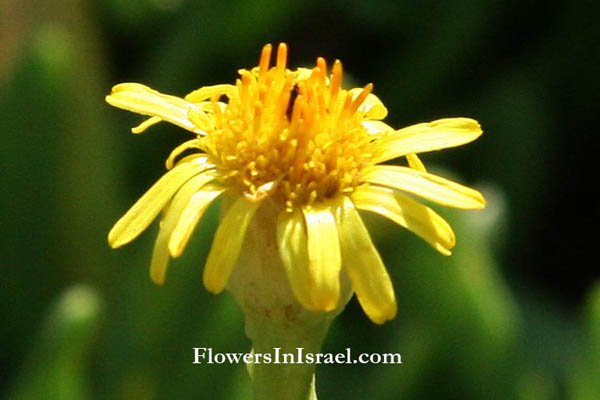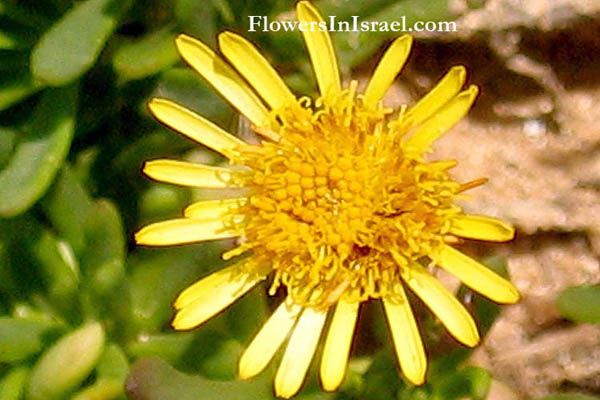Eritheis maritima, Golden samphire,
Hebrew: בן-טיון בשרני , Arabic: طيون ملحي
| Scientific name: | Limbarda crithmoides (L.) Dumort | |
| Synonym name: | Inula crithmoides L., Jacobaea crithmoides (L.) Merino, Inula crithmoides subsp. crithmoides, Eritheis maritima Gray | |
| Common name: | Golden samphire | |
| Hebrew name: | בן-טיון בשרני | |
| Arabic name: | طيون ملحي | |
| Family: | Compositae / Asteraceae, מורכבים |

|
| Life form: | Chamaephyte, semi-shrub | |
| Succulence: | Leaf succulent | |
| Stems: | 30-60 cm high; glabrous; woody at base | |
| Leaves: | Alternate, entire, linear | |
| Inflorescence: | In lax corymbs or solitary | |
| Flowers: | Hermaphrodite; peduncles elongated, thickened above, bearing small linear acute bracts; yellow flower heads 1.5-3 cm in diameter; involucral bracts glabrous, acuminate; ray florets about twice as long as involucre | |
| Fruits / pods: | Cypselas 2-3mm, hairy; pappus simple, rough | |
| Flowering Period: | January, February, October, November, December | |
| Habitat: | Salty habitats, Mediterranean strand | |
| Distribution: | Mediterranean Woodlands and Shrublands, Semi-steppe shrublands, Shrub-steppes, Deserts and extreme deserts | |
| Chorotype: | Mediterranean | |
| Summer shedding: | Perennating |

Derivation of the botanical name: Limbarda, named from Limbarde, as the plant is called in some parts of France. crithmoides, like, resembling, having the form or nature of Crithmum maritimum. inula, from Helen of Troy, being fabled to have sprung up from the ground where her tears were supposed to have fallen. Jacobaea, possibly in honor of St. James (Jacob or Jacobus), one of the 12 Apostles. Eritheis, εριθεύς, faction, factiousness. maritima, growing by the sea. The Hebrew name: בן-טיון, ben-tion, בן, ben derives from יבנה ( = to build); טיון (New Hebrew), inula.
|